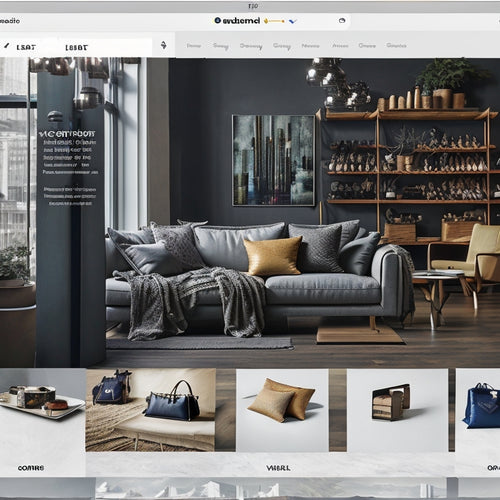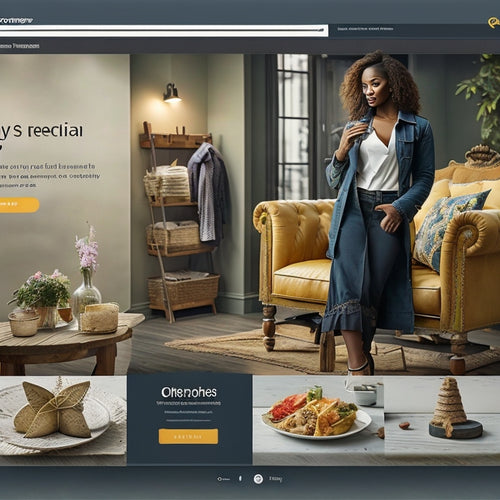
3 Dynamic Pricing Strategies to Maximize Sales
Share
You can maximize sales by up to 25% by implementing dynamic pricing strategies that capitalize on peak demand, tailor to customer segments, and incentivize repeat business. For instance, surge pricing can increase revenue by up to 15% during peak periods by making real-time adjustments to your pricing strategy. Tiered pricing can result in a 10-20% increase in average order value by catering to different customer segments. Meanwhile, dynamic discounts can increase repeat business by 5-10% by offering personalized rewards to loyal customers. Now, discover how to fine-tune these strategies to reveal even more revenue potential.
Key Takeaways
• Surge pricing during peak demand can increase revenue by up to 15% by capitalizing on demand spikes with real-time pricing adjustments.
• Tiered pricing can result in a 10-20% increase in average order value by segmenting offerings and appealing to a wider range of customers.
• Dynamic discounts for loyal customers can increase repeat business by 5-10% by offering personalized rewards and tracking customer behavior.
• Combining demand forecasting with surge pricing drives revenue growth by staying ahead of demand spikes and adjusting pricing strategies accordingly.
• Analyzing customer data to identify opportunities for targeted promotions helps maximize sales by offering loyalty rewards and personalized discounts.
Surge Pricing for Peak Demand
When demand exceeds available supply, implementing surge pricing strategies can increase revenue by up to 15% during peak periods, such as holidays or special events. You can capitalize on this opportunity by making real-time adjustments to your pricing strategy. By understanding customer psychology, you can tailor your pricing to meet their willingness to pay during peak periods. This allows you to capture the maximum revenue possible.
To gain a competitive advantage, you need to stay ahead of the curve with demand forecasting. Accurate forecasting enables you to anticipate peak periods and adjust your pricing accordingly. This secures that you're not leaving money on the table. By combining demand forecasting with surge pricing, you can create a powerful pricing strategy that drives revenue growth.
With the right data and analytics, you can make informed decisions that maximize your revenue potential. By embracing surge pricing, you'll be well on your way to dominating your competition and achieving your revenue goals.
Tiered Pricing for Maximum Value
By segmenting your offerings into tiered pricing structures, you can extract maximum value from each customer transaction, often resulting in a 10-20% increase in average order value. This strategy allows you to cater to different customer segments, each with their unique needs and willingness to pay.
By offering custom bundles and varying levels of service, you can appeal to a wider range of customers and maximize revenue.
Here are 3 ways tiered pricing can supercharge your sales:
-
Increased average order value: By offering premium tiers with additional features or services, you can incentivize customers to upgrade and increase their spending.
-
Improved customer satisfaction: Tiered pricing allows customers to choose the level of service that best fits their needs, leading to higher satisfaction and loyalty.
-
Enhanced price optimization: With tiered pricing, you can test and refine your pricing strategy to identify the sweet spot that drives the most revenue.
Dynamic Discounts for Loyal Customers
You can further boost sales by implementing dynamic discounts that reward your most loyal customers, typically resulting in a 5-10% increase in repeat business and a 20-30% rise in customer retention rates. By recognizing and rewarding loyalty, you foster a sense of appreciation and encourage repeat purchases.
Implementing loyalty rewards programs, such as points or tier systems, allows you to track customer behavior and tailor personalized discounts to their specific needs. This targeted approach guarantees that your most valuable customers feel valued and appreciated, driving long-term loyalty.
To maximize the impact of dynamic discounts, analyze customer purchase history and behavior to identify opportunities for targeted promotions. For instance, offer exclusive discounts to customers who've made repeat purchases or reached certain spending thresholds.
You can also use data analytics to identify high-value customers and offer personalized discounts to retain their business. By doing so, you'll create a loyal customer base that will drive repeat sales and advocacy, ultimately fueling your business growth.
Frequently Asked Questions
How Often Should I Adjust My Dynamic Pricing Strategy?
You'll need to strike a balance when adjusting your pricing strategy, considering factors like customer feedback and competitive analysis. Aim to reassess pricing frequency seasonally, incorporating data-driven insights to optimize revenue and stay ahead of the competition.
Can I Use Dynamic Pricing for Limited-Time Offers Only?
You can use dynamic pricing for limited-time offers only, but be cautious not to compromise pricing consistency, as flash sales can erode consumer trust if overused, and urgency tactics may lose effectiveness over time.
Do Customers Respond Well to Transparent Pricing Algorithms?
You'll find that customers respond well to transparent pricing algorithms when they perceive fairness and trust, as it builds credibility and loyalty, but be cautious of ethical implications that can erode trust if not executed carefully.
How Do I Balance Profit Margins With Customer Satisfaction?
You balance profit margins with customer satisfaction by leveraging pricing psychology to optimize prices, conducting competitive analysis to inform brand positioning, and fostering customer loyalty through transparent, data-driven strategies that prioritize value.
Can I Combine Dynamic Pricing With Other Sales Strategies Effectively?
You can amplify sales by combining dynamic pricing with strategic tactics like bundling promotions to incentivize bulk buys and seasonal discounts to capitalize on timely demand, ultimately driving revenue and customer loyalty.
Related Posts
-

What Drives Ecommerce Scalability in the Digital Age?
You're likely already aware that your ecommerce business needs to be scalable to stay competitive in today's digital ...
-

Optimize Your Shopify Store With Automated Tagging
This article explores the optimization of Shopify stores through the implementation of automated tagging. Shopify ta...
-

Should I Add Reviews to My Shopify Store
The inclusion of customer reviews in e-commerce platforms has become a topic of interest and debate among Shopify st...


